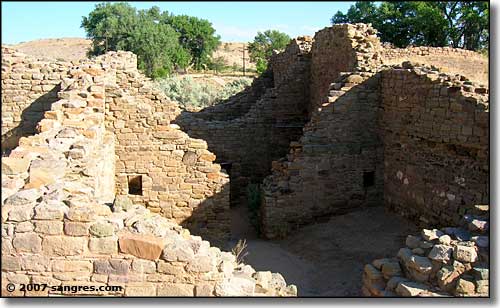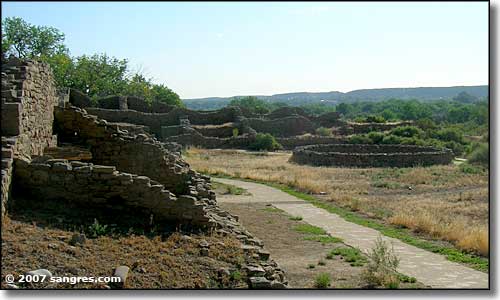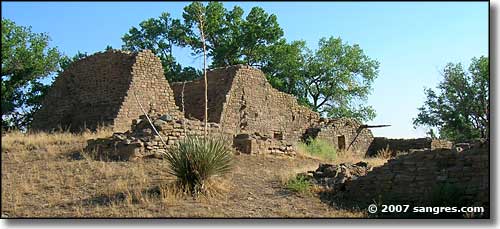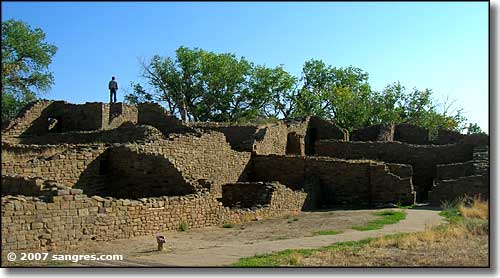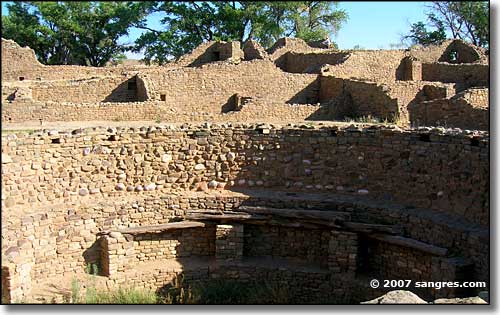
These ruins comprise the Aztec Ruins National Monument, preserving structures and artifacts of Ancestral Pueblo people from the 1100's and 1200s. People associated with Chaco Canyon to the south built and used the structures, then people related to the Mesa Verde region to the north used the site in the 1200's. The monument was established in 1923, and designated a World Heritage Site in 1987. Contained within the Monument are large, apartment-style dwellings and a restored great kiva. The Ruins are open in the summer from 8 AM to 6 PM, seven days a week, and in the winter from 8 AM to 5 PM, seven days a week.

An outer residential area
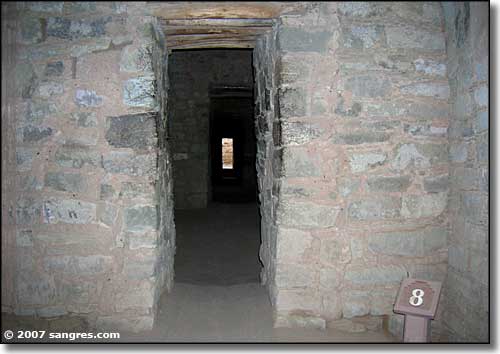
Passing through a residential area to get into the central courtyard
Somewhere in the late 1000's, a group of Native Americans planned and began building a large community on high ground overlooking the river. 200 years later, the complex they had originally designed had grown into several great houses, small residential pueblos, tri-walled kivas, roads, earthworks, and great kivas. When you consider the formal layout of the settlement, the purposeful modifications of the landscape, and the orientation and visual relationships among the buildings, you can see that the final product was part of the original design, finished several generations after the original designers passed on. In the early 1100's, the great house of the West Ruin was built. This structure consisted of at least 400 contiguous rooms with three stories and numerous kivas, including a great kiva in the plaza.
By 1130, the majority of construction activity shifted to the area of the East Ruin (which area is presently off-limits to the public). Another 150 years was spent in the construction of the East Ruin. Both of these ruins were built in Classic Chacoan style although both structures were built either as Chacoan influence was waning or after Chaco had been abandoned. Archaeologists figure that the Aztec Ruins were pretty much abandoned by the late 1200's as continuing drought forced the people either into Arizona or downstream to the Rio Grande in New Mexico in search of water and better living conditions.
Nearby is Mesa Verde National Park, Chaco Culture National Historic Park in Chaco Canyon, and the Salmon Ruins, another ancient Pueblo ruin just down the road from Aztec.

